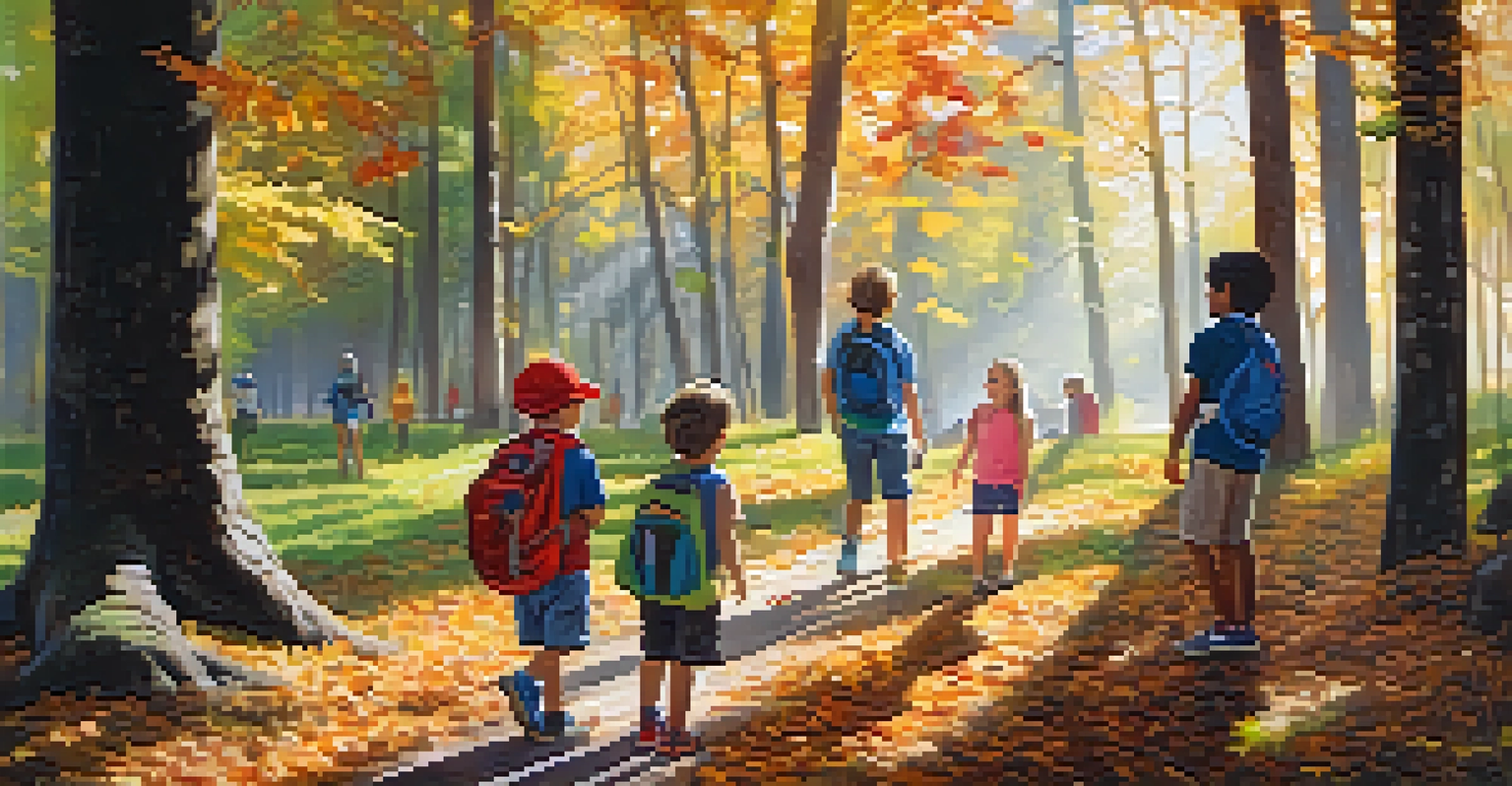Yoga for Grounding: Techniques to Stay Present with Kids

What is Grounding and Why It Matters for Kids
Grounding is the practice of connecting to the present moment, which can be especially beneficial for children. When kids feel overwhelmed or anxious, grounding techniques can help them regain their focus and calm. This connection to the present helps them manage their emotions and reactions more effectively.
The present moment is filled with joy and happiness. If you are attentive, you will see it.
For instance, think of grounding like planting a tree. Just as a tree needs strong roots to stand tall, children require grounding techniques to feel secure and steady in their environment. Activities that instill this sense of stability can lead to improved behavior and emotional regulation.
Moreover, grounding can empower kids to navigate their feelings and enhance their overall well-being. When they learn to stay present, they can enjoy each moment, whether it's playing with friends or participating in family activities.
Simple Breathing Techniques for Children
One of the easiest grounding techniques is focused breathing, which can be both fun and calming for kids. Have them take a deep breath in through their nose for a count of four, hold for four, and exhale through their mouth for another four. This simple pattern can help them feel more centered and relaxed.

You might even turn this into a game! For example, have them imagine they're blowing up a big balloon with each exhale, making the activity more engaging. This not only teaches them to breathe mindfully but also allows them to express their creativity.
Grounding Helps Kids Manage Emotions
Grounding techniques empower children to connect with the present moment, helping them regulate their emotions and navigate overwhelming feelings.
By incorporating breathing exercises into daily routines, children can develop a habit that helps them manage stress and anxiety. Over time, these practices can become second nature, providing them with tools they can use whenever they need a moment of calm.
Grounding Through Movement: Simple Yoga Poses
Yoga poses can be a powerful way for kids to ground themselves while having fun. Simple poses like Tree Pose or Warrior Pose help to build strength and stability, both physically and mentally. Encouraging kids to embody these poses allows them to connect their body and mind more effectively.
Mindfulness isn’t difficult, we just need to remember to do it.
For example, while practicing Tree Pose, children can visualize themselves as a strong tree, with roots growing deep into the earth. This imagery reinforces the idea of grounding, helping them to feel more secure in their surroundings. Plus, it’s a great way to get their energy out!
Incorporating a few poses into your family routine can create a joyful bonding experience. Whether it's a morning stretch or a calming evening practice, these moments can foster connection and mindfulness, turning yoga into a family affair.
Mindfulness Activities to Enhance Presence
Mindfulness activities are fantastic tools for helping kids stay present. Simple practices like mindful walking or listening to nature sounds can enhance their awareness of the world around them. These activities encourage children to engage their senses and appreciate the moment, making them feel more grounded.
Consider taking a nature walk where kids can focus on what they see, hear, and feel. Ask them to describe the colors of the leaves or the sounds of birds chirping. This not only enhances their observation skills but also provides a refreshing break from screens.
Fun Techniques for Mindful Breathing
Simple breathing exercises can transform into engaging activities that teach kids to center themselves and manage stress effectively.
By integrating mindfulness into their daily lives, children can cultivate a greater sense of calm and focus. These activities can create lasting habits that promote emotional well-being and resilience as they grow.
Using Visualization Techniques for Grounding
Visualization is a powerful tool that can help kids ground themselves. Encouraging children to close their eyes and imagine a peaceful place can help them escape overwhelming feelings and reconnect with the present. This mental imagery can be particularly soothing during stressful situations.
For instance, guide them to picture a beach with gentle waves lapping at the shore, or a cozy forest filled with sunshine filtering through the trees. This technique allows them to create their own safe space, fostering a sense of comfort and security.
Utilizing visualization regularly can become a go-to strategy for children when they feel anxious. It teaches them that they have the power to manage their feelings by simply shifting their focus to a calming scene.
Creating a Grounding Routine Together as a Family
Establishing a grounding routine can be a wonderful way to foster mindfulness as a family. Setting aside time each day for yoga, breathing exercises, or mindfulness activities can create a supportive environment for everyone. This shared practice encourages connection and nurtures emotional intelligence.
Consider creating a mini yoga or meditation space at home where everyone can join in. Having a dedicated spot can make the practice feel special and inviting, ensuring that kids look forward to these moments together.
Creating Family Grounding Routines
Establishing a grounding routine together as a family fosters mindfulness, emotional intelligence, and strengthens family bonds.
Ultimately, building a grounding routine not only benefits the children but also reinforces family bonds. It creates opportunities for open conversations about feelings and reinforces the idea that it's okay to seek calm when life feels chaotic.
Embracing Imperfection: Being Present in the Moment
One important lesson in grounding is learning to embrace imperfection. It’s natural for kids (and adults!) to have moments of distraction or difficulty staying present. Teaching them that it’s okay to feel this way can help reduce anxiety and foster resilience.
Encourage kids to approach grounding techniques without the pressure of achieving perfection. Instead, focus on the joy of simply trying. This approach can lead to more authentic experiences and a deeper connection to the practice.

By normalizing the ups and downs of mindfulness, children can develop a healthier relationship with their emotions. They learn that being present is a journey, not a destination, which can be a powerful lesson for life.